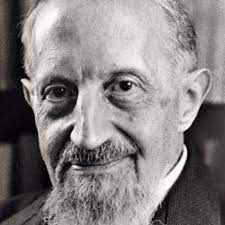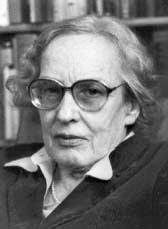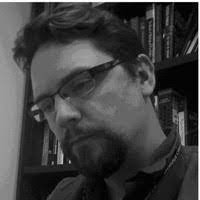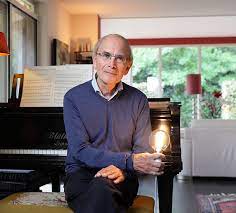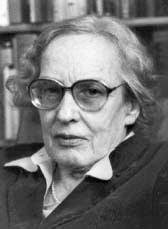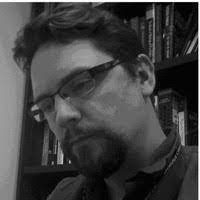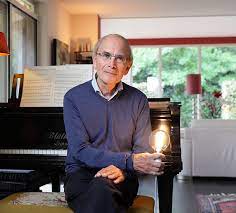By Prof. Levine & Dr. Salganik
The case of Shlomit…
Our patients are often our teachers for understanding the inner worlds associated with patients and psychopathology.
Thus the "laboratory" for the development of the theoretical method for RGFT was the treatment room or actually the treatment process and its content.
Hence, on the one hand the discourse of a particular patient may have a potential to teach us about the development of a particular illness or mental condition and even ways to deal with them, and on the other hand, the therapist often has a thought or idea about the new ways of doing it within his/her treatment room but also in the wards of a psychiatric hospital.
This was, for example, the way the “Trigger Event Analysis” (TEA) the method analysing triggers or events that contribute to the onset of a mental condition or mental psychopathology, has been developed. The idea of the TEA emerged following the story of a patient in the psychogeriatric ward, a subdivision engineer whose daughter has been killed in a car accident, am event that affected him much less than his transfer to another job position without any change in his working conditions. This last event was perceived by him as a terrible humiliation and he committed a suicide attempt by jumping from the 3rd floor. This unfortunate event demonstrated clearly the individual relevance of traumas and is inconsistent with the accepted scale known as Stress Inventory by Holmes & Rahe.
We would like to bring this time a summary of the long treatment in which a bipolar (manic-depressive) patient was accompanied by one of us [JL] for about two decades.
Read more »
By Prof. Levine & Dr. Salganik
המקרה של שלומית…
המטופלים שלנו הם לא פעם המורים שלנו להבנת העולמות הפנימיים הקשורים בחולי ובפסיכופתולוגיה.
כך "המעבדה" לפיתוח השיטה התיאורטית ל RGFT הייתה חדר הטיפול או בעצם מהלך הטיפולים ותוכנם.
כך, מחד לקורות את מטופל מסוים פוטנציאל ללמדנו אודות התפתחותה של מחלה או מצב נפשי מסויים ואף דרכים להתמודד עימם, ומהצד השני, למטפל יש לא פעם מחשבה או רעיון כיצד להתמודד עם הקורות עם מטופליו והוא בודק את יישומו עם מטופליו בעיקר בקליניקה אך גם במסגרת מחלקות של בית החולים הפסיכיאטרי.
כך למשל [TRIGGER EVENT ANALYSIS] TEA [אנליזת הטריגרים או האירועים התורמים לפריצת מצב חולי או פסיכופתולוגיה נפשיים] פותח בעקבות סיפורו של מטופל במחלקה הפסיכוגריאטרית, מהנדס נפה שמות ביתו שנהרגה לא השפיע עליו כמו ביקורת בעבודה והעברתו לתפקיד רוחבי ללא שינוי תנאיו בעבודה. אירוע אחרון זה נתפס על ידו כהשפלה נוראית והוא ניסיון אובדני בקפיצה מקומה גבוהה, דבר המלמד על היחסיות של טראומות ולא עולה בקנה אחד עם הסקלה המקובלת המכונה STRESS INVENTORY של HOLMES & RAHE .
חולה זה אפוא הדגים כי לסטרסורים [גורמי לחץ] משמעות אינדיבידואלית ולא כללית כפי שהיה מקובל.
ברצוננו להביא הפעם טיפול ארוך בו לוותה חולה ביפולרית או מנית דפרסיבית [שתכונה האן שלומית] על ידי אחד מאיתנו [י.ל.] כשני עשורים.
בטיפול נידונו נושאים רבים כולל טיפול תרופתי. אך כאן נתמקד בהיבט אחד והוא הטיפול בדמיון מודרך.
מטופלת זו טופלה קודם לכן בטיפול אנליטי, בבואה לטיפול ביקשה להיות מטופלת בדמיון מודרך אך בלא הכוונה מצד המטפל [בעצם כאן ההדרכה של הדמיון על ידי המטפל הייתה מינימלית].
תחילה נאמר לה באיטיות ובהדרגה לעצום את עיניה ולתת לאברי הגוף להיות רפויים.
ולאחר מכן המשפט "תני לדמיון להוביל אותך או את אותו כרצונך ואני [המטפל] אספור באיטיות עד 30.
Read more »
By Prof. Levine & Dr. Salganik
Good day!
Here we will refer to three different types of treatments that have similarities with RGFT and we will examine the differences between them.
The first of these is the theory and method of treatment proposed by Roberto Assagioli.
Roberto Assagioli was an Italian psychoanalyst who was influenced by both Freud and Jung in creating the theory and treatment method that he called "psychosynthesis."

Roberto Assagioli
Assagioli expanded the teaching founded by Freud through the expansion of the unconscious so that it could include the collective unconscious and the archetypes.
As he himself stated: “We pay far more attention to the higher unconscious and to the development of the transpersonal self. In one of his letters Freud said, “I am interested only in the basement of the human being.” Psychosynthesis is interested in the whole building. We try to build an elevator which will allow a person access to every level of his personality. After all, a building with only a basement is very limited. We want to open up the terrace where you can sun-bathe or look at the stars. Our concern is the synthesis of all areas of the personality. That means Psychosynthesis is holistic, global and inclusive”.
The 7 core concepts of psychosynthesis are:
- disidentification
- the personal self
- the will
- the ideal model
- synthesis
- the superconscious
- the transpesonal Self
Beside “disidentification”, all these concepts can be in this or other way derived from the well known Freudian and Jungian postulates.
We cite Assagioli here because some of his theoretical elaborations sound similar to RGFT and therefore demand clarifications. Specifically, he spoke of “sub-personality” (the same term is used in earlier mentioned by us “Voice dialogue”). This concept resembles in some way a concept of the “secondary self” in RGFT. But, as in the “Voice dialogue”, it represents more a partial “feature” of a person (architypal or otherwise originated) and not a personally significant character that could be traced in the person’s history as in RGFT. Still, the concept of disidentification is identical to that in RGFT and serves analogous purpose – it reveals the true nature of our identity with a specific attitude or behavior and allows us to extend our consious choices. Finally, the key concepts of Assagioli root in some part in the spiritual world, whereas RGFT is based mostly on the theoretical constructs of social psychology.
Read more »
By Prof. Levine & Dr. Salganik
כאן נתייחס לשלשה סוגי טיפולים שונים שיש להם קווי דמיון עם RGFT ונעמוד על המבדיל ביניהם.
הראשון ביניהם הוא התיאוריה ושיטת הטיפול שהוצעה על ידי אסג'יולי [ Roberto Assagioli ].
רוברטו אסג'יולי היה פסיכואנליטיקאי איטלקי שהושפע הן מפרויד והן מיונג ביצירת התיאוריה ושיטת הטיפול שכינה "פסיכוסינתזה".

רוברטו אסג'יולי
אסג'יולי הרחיב את המסד שהניח פרויד ואת הרחבת הלא מודע כך שיוכל לכלול את הלא מודע הקולקטיבי והארכיטיפים הגלומים בו.
כפי שהוא עצמו הצהיר: "אנו מקדישים תשומת לב רבה יותר ללא מודע הגבוה יותר ולהתפתחות העצמי הטרנס-פרסונלי. פרויד הוא מציין, כתב באחד ממכתביו ,"אני מתעניין רק במרתפו של האדם". "פסיכוסינתזה" מציין אסגיולי מתעניינת "בכל הבניין… בגישה זו אנחנו מנסים לבנות מעלית שתאפשר לאדם גישה לכל רמה באישיותו…אחרי הכל, בניין עם מרתף בלבד מוגבל מאוד. אנחנו רוצים לפתוח את המרפסת שבה תוכלו לטבול באור השמש או להתבונן בכוכבים. המטרה שלנו היא ליצור סינתזה של כל תחומי האישיות כולל החלק הרוחני. דבר האומר שפסיכוסינתזה היא הוליסטית, גלובלית ומכילה".
אנו מזכירים כאן את אסג'יולי משום שחלק מההרחבות התיאורטיות שלו נשמעות דומות ל-RGFT ועל כן דורשות הבהרות. באופן ספציפי, אסג'יולי דיבר על "תת-אישיות" (מונח שהוזכר על ידינו בשיחה הקודמת אודות "דיאלוג קולי"). מושג זה דומה בדרך כלשהי למושג של "העצמי המשני" ב- RGFT. אבל, כמו ב"דיאלוג הקולי ", הוא מייצג יותר "תכונה" חלקית של האדם (ארכיטיפית או אחרת) ולא דמות משמעותית שניתן לעקוב אחריה דמות עם היסטוריה אישית כמו ב- RGFT.. לבסוף, מושגי המפתח של אסג'יולי מושרשים בחלקם בעולם הרוחני, בעוד ש- RGFT מבוסס בעיקר על המבנים התיאורטיים של הפסיכולוגיה החברתית.
Read more »
By Prof. Levine & Dr. Salganik
Hello, this time we will discuss what is between the Jungian treatment and RGFT.
An archetype is a prototype of an idea, an object that stays at the bottom of human memory, as a kind of model or template for images originating from the very early stages of human kind.

Carl Jung
In his book “Man and His Symbols”, psychiatrist Carl Jung explains that archetypes "are the pieces of life themselves – images that are integrally connected to the person living by the bridge of emotions." While we tend to think of our consciousness in a uniform sense of self (or of me), a careful examination of consciousness may show that instead of consciousness being perceived as a unit, it may be a pantheon of archetypal figures existing in our minds.
“Archetypes,” writes psychologist Marie-Louise von Franz in her “Archetypal Dimensions of the Psyche”, are “hereditary tendencies that cause us to respond typically to basic, internal, or external human problems”.
“Archetypes”, she claims, “affect everything a person thinks, feels and does. Therefore, when dealing with archetypes, think of fixed patterns of behavior common to all of humanity”.

Marie-Louise von Franz
Among the common archetypes can be found those of the ‘hero, warrior, teacher, mother, child’, and more. The archetypes appear in a variety of forms, including figures in mythology, art in religion in stories, symbols, and rituals and various myths.
Psychologist Carl Gustav Jung (early 20th century) saw the archetype as a human mental pattern that manifested itself in broad areas.
According to Jung's analytical theory, there are a number of key archetypes:
‘Ego’ – the archetype of adaptation to reality and the source of identity.
The ‘shadow’ – the inferior and undesirable side of our personality, which we are not willing to admit exists. The "dark part", which inhabits the primitive passions and emotions that exist in us.
The ‘persona’ – the mask we wear in accordance with the requirements of the environment and society. The social personality, which hides the "true self" -.
‘Anima’ – the feminine element found in men.
The ‘animus’ – the masculine element in women.
The ‘self’- which gives the personality uniformity, balance and stability.
Other archetypes are:
Ego – the archetype of adaptation to reality and the source of identity.
The shadow – the inferior and undesirable side of our personality, which we are not willing to admit exists. The "dark part", which inhabits the primitive passions and emotions that exist in us.
The persona – the mask we wear in accordance with the requirements of the environment and society. The social personality, which hides the "true self" -.
Anime – the feminine element found in men.
The animus – the masculine element in women ,.
The self – which gives the personality uniformity, balance and stability.
Other archetypes are: ‘mother figure, child, God, mother earth, hero, old man, sage, monk, manipulator, caregiver, king, queen, mentor, prostitute, tyrant’ and more.
Here are two comments in the context of Jungian theory
A] According to Eric Goodwyn, since Jung assumed that the archetype was an a priori structure, previously formed structures within the psyche, he was constantly accused of "marcionism". Recently, with the advent of genetic research and the human genome project, the idea that psychological structures can be innate has come under even more harsh criticism in Jungian thought. There seems to be a growing consensus today that Jung's idea of innate psychological structures was wrong, and that perhaps the archetype as such should be abandoned in favor of more developmental theories of the mind.

Erik Goodwyn
Erik Goodwyn. Approaching archetypes: reconsidering innateness. 2010 Sep;55(4):502-2. J Anal Psychol.
B] The concept of Dialogical Self [DS] was added in the 1990s by some authors to the body of Jungian theory.
An exhaustive definition of this was given by Hubert Hermans and his colleagues who defined the "dialogical self" as a dynamic multiplicity of stated positions of an expanded internal discourse of the psyche that includes topical figures in the social world and even imaginary figures closely related to topical figures "
Hubert Hermans' theory of the "dialogical self" sees the self not as one entity, but as "a society of consciousness" composed of "many selves" or in other words of many self-figures. He calls these self-positions I-positions, (the letter I in English from the word "I") that are in constant dialogue. Where each single position of “I” contributes to the way it sees and feels itself and the world.
Hermans used the metaphore of a stage and actors to describe the interactions of I-positions in the "dialogical self." Sometimes in certain circumstances there may represent a confrontation within the "dialogical self" of a person when the I and I-positions criticize and fight each other, these positions may be in some cases of other people – sharing their true or imagined opinions to create negative dialogues that may provoke feelings of doubt and anxiety.
This concept allows for an extension of Jungian treatment not only to archetypes but also to real actual figures and their imaginary aspects where it can happen that sometimes the imaginary figures are derivatives of the archetypal figures and usually the real figures are at the forefront compared to the imaginary figures and their possible archetypal connection.

Hubert Hermans
So what are the differences then between the archetypal figures in psychic life in Jungian therapy compared to RGFT?
Contrary to Jung's conception of archetypes which are regarded as constant representations from generation to generation and identical in all human beings. In RGFT the perception is related to the individual historical past (of just decades) of a particular person, to that person’s internalized figures which are usually related to that past, and to its unique development. On the other hand, RGFT adapts a certain evolutionary conception which relates to the development of different kinds of "self" with similar aspects in all human beings.
Contrary to Jung's conception of archetypes, regardless of the time of their formation or the circumstances that led to their formation, in the RGFT, the different types of dominant "self" originated in the prehistoric period when each of these selves stems from different roles in the tribal system, for example, " the tribe’s leader", "the hunter", "the shaman", "the guardian of the fire", "the plucker", etc.
RGFT refers to the period of the primitive tribal man as a source for the formation of the prototypical features of the dominant self ( that are based upon the real, necessity forced roles within the tribe) as opposed to Jungian not historically associated archetypes. RGFT conception chose the primitive communal system
as a basic referent point since it was the period when the more sophisticated socialization along with the first forerunners of language were formed.
Finally, RGFT revolves entirely around social conception.
And what are the differences between Dialogical Self and RGFT?
In Dialogical Self the central concept is one self where it is perceived in a more complex way and includes a variety of parts resulting from the interactions with the different characters, both realistic and imagined.
In contrast, in RGFT the basic perception is not of one self but of multiple selves where each self exists in its own right with its own creation and history with a number of specific characteristics such as emotional aspects, attitudes, forms of behavior and more.
See you in the next session,
Dr. Igor Salganik and Prof. Joseph Levine
By Prof. Levine & Dr. Salganik
שלום, הפעם נדון על מה שבין והטיפול היונגיאני ו RGFT.
ארכיטיפּ הוא אב טיפוס של רעיון, אובייקט הנשאר כמשקע בזיכרון האנושי, כמין מודל או תבנית לדימויים קדומים מעברה של האנושות.

קרל יונג
בספרו "האדם וסמליו" מסביר הפסיכיאטר קרל יונג כי ארכיטיפים "הם פיסות החיים עצמם – דימויים המחוברים באופן אינטגרלי לאדם החי על ידי גשר הרגשות". אמנם אנו נוטים לחשוב על התודעה שלנו בתחושה אחידה של עצמיות (או של אני) , אבל יתכן ובחינה מדוקדקת של התודעה מראה כי במקום שהתודעה תתפס כיחידה, היא אולי פנתיאון של דמויות ארכיטיפיות הקיימות במוחנו.
הארכיטיפים", כותבת הפסיכולוגית מארי-לואיז פון פרנץ [ Marie-Louise von Franz : Archetypal Dimensions of the Psyche] , "הם נטיות תורשתיות, הגורמות לנו להגיב בצורה אופיינית לבעיות אנושיות בסיסיות, פנימיות או חיצוניות".
ארכיטיפים היא טוענת משפיעים על כל מה שהאדם חושב , מרגיש ועושה. לכן ,אם בארכיטיפים עסקינן, חשבו על דפוסי התנהגות קבועים המשותפים לאנושות כולה.

מארי-לואיז פון פרנץ
בין הארכיטיפים הנפוצים ניתן למצוא את זה של הגיבור, הלוחם, המורה, האם, הילד, ועוד. הארכיטיפים מופיעים במגוון של צורות, כולל דמויות במיתולוגיה, באמנות בדת בסיפורים, בסמלים, ובטקסים ובמיתוסים שונים.
הפסיכולוג קרל גוסטב יונג [בתחילת המאה ה-20] ראה בארכיטיפ תבנית מנטלית אנושית שבאה לידי ביטוי בתחומים רחבים.
על פי התאוריה האנליטית של יונג, קיימים מספר ארכיטיפיים מרכזיים:
אגו – ארכיטיפ ההסתגלות למציאות ומקור הזהות.
הצל – הצד הנחות והלא רצוי באישיותנו, שאין אנו מוכנים להודות בקיומו. ה"חלק האפל", המאכלס את היצרים והרגשות הפרימיטיביים הקיימים בנו.
הפרסונה – המסכה אותה אנו חובשים בהתאם לדרישות הסביבה והחברה. האישיות החברתית, המסתירה את ה"אני האמיתי" -.
האנימה – היסוד הנשי המצוי בגברים.
האנימוס – היסוד הגברי בנשים,.
העצמי – המקנה לאישיות אחידות, שיווי משקל ויציבות.
ארכיטיפים נוספים הם: דמות האם, הילד, אלוהים, אמא אדמה, הגיבור, הזקן, החכם, נזיר, מניפולטור,מטפלת, מלך, מלכה, מנטור, זונה, עריץ ועוד.
להלן שתי הערות בהקשר לתיאוריה היונגיאנית
א] על פי אריק גודווין הרי שמאז שיונג הניח כי הארכיטיפ הינו מבנה א-פריורי בתוך הנפש הוא הואשם ללא הרף ב"למרקיאניזם" וביקורת נמתחה על הנחתו כי הארכיטיפים קיימים כמבנים קודמים. לאחרונה, עם הופעת המחקר הגנטי ופרויקט הגנום האנושי, הרעיון שמבנים פסיכולוגיים יכולים להיות מולדים נתקל בביקורת חריפה עוד יותר אפילו במחשבה היונגיאנית. נראה שיש כיום קונצנזוס הולך וגובר כי הרעיון של יונג על מבנים פסיכולוגיים מולדים היה מוטעה, וכי אולי יש לנטוש את הארכיטיפ ככזה לטובת תיאוריות התפתחותיות יותר של הנפש.

אריק גודווין
Erik Goodwyn. Approaching archetypes: reconsidering innateness. 2010 Sep;55(4):502-2. J Anal Psychol
ב] המושג Dialogical Self [DS] הוסף בשנות ה90 של המאה העשריםעל ידי מחברים אחדים לגוף התיאוריה היונגיאנית
הגדרה ממצת לכך נתנו הוברט הרמנס וחבריו שהגדירו את ה"סלף הדיאלוגי" כריבוי דינמי של עמדות מוצהרות של דושיח פנימי מורחב של הנפש הכולל דמויות אקטואליות בעולם החברתי ואף דמויות מדומיינות הקשורות באופן הדוק לדמויות האקטואליות"
התיאוריה של "העצמי הדיאלוגי" של הוברט הרמנס רואה את העצמי לא כישות אחת, אלא "כחברת תודעה" המורכבת מ"עצמיים רבים" או במילים אחרות מדמויות עצמי רבות. הוא קורא לעמדות העצמי הללו עמדות -I, [האות I באנגלית מלשון "אני"] הנמצאות בדיאלוג מתמיד. כאשר כל עמדת I תורמת את האופן שבה היא רואה וחשה את עצמה והעולם. הרמנס השתמש בדימוי של במה ושחקנים לתאר את יחסי הגומלין של עמדות I ב"עצמי הדיאלוגי". לעיתים בנסיבות מסויימות עלול להווצר עימות ב"אני הדיאלוגי" של האדם כאשר עמדות ה-I ו מבקרות ונלחמות זו בזו, עמדות אלו עלולות להיות במקרים מסויימים של אנשים אחרים – החולקים את דעותיהם האמיתיות או המדומיינות עד ליצירת דיאלוגים שליליים העלולים לעורר תחושות של ספק וחרדה.
מושג זה מאפשר הרחבה של הטיפול היונגיאני לא רק לארכיטיפים אלא גם לדמויות אקטואליות ריאליות והיבטיהן המדומיינים כאשר יתכן כי לעיתים הדמויות המדומיינות הינן נגזרות של הדמויות הארכיטיפיות ובדרך כלל הדמויות הריאליות נמצאות בחזית לעומת הדמויות המדומיינות והקשרן האפשרי לארכיטיפיים שהן יותר ברקע.

Hubert Hermans
מהם אפוא ההבדלים בין בדמויות הארכיטיפיות בחיי הנפש והטיפול היונגיאני לעומת וRGFT
בניגוד לתפיסת יונג לגבי הארכיטיפיים שהם ייצוגים קבועים מדורי דורות וזהים אצל כל בני האדם. בRGFT התפיסה קשורה בעבר ההיסטורי [של עשרות שנים בלבד] של האדם המסויים, בהדמויות המופנמות של אותו אדם הקשורות בדרך כלל בעבר זה ובהתפתחותו הייחודית. מצד שני גם כאן יש תפיסה אבולוציונית מסויימת המתייחסת להתפתחות סוגים שונים של "עצמי " עם ההיבטים הדומים אצל בני אדם ככלל. בניגוד לתפיסת יונג המתייחסת לארכיטיפיים ללא התייחסות לזמן הווצרותם או לנסיבות שגרמו להווצרותם ב RGFT הטיפוסים השונים של "העצמיים" הדומיננטיים מקורם בתקופת האדם הקדמון כשכל אחד מעצמיים אלו נובע מהתפקידים השונים במערך השבטי למשל "מנהיג השבט" "הצייד" "השמאן" "שומר האש" "המלקטת" וכד'.
RGFT מתייחס לתקופת האדם הקדמון השבטי כמקור להווצרותם של הפרוטוטיפיים [דוגמא ל.., או אבטיפוס] [בניגוד לארכיטיפיים שזה דפוסים קדומים] של העצמיים הדומיננטים כיון שזאו הייתה התקופה בה התגבשו לראשונה התנאים של חיברות ובה נוצרו גם המבשרים הראשונים של השפה.
לבסוף RGFT מסתובב כולו סביב התפיסה החברתית.
ואילו מהם ההבדלים בין Dialogical Self ובין RGFR
ב Dialogical Self המושג המרכזי הינו עצמי אחד כשההתייחסות היא שהעצמי נתפס בצורה מורכבת יותר וכולל מגוון חלקים שנובעים מהאינטרקציות עם הדמויות השונות אלו המציאותיות ואלו המדומיינות בניגוד לכך בRGFT התפיסה הבסיסית אינה של עצמי אחד אלא של עצמיים מרובים כשכל עצמי קיים בזכות עצמו עם היסטוריה והווצרותית משלו ומספר מאפיינם כמו היבטים רגשיים, עמדות, צורות התנהגות ועוד.
להתראות בשיחה הבאה,
דר' איגור סלגניק ופרופ' יוסי לוין
 Prof. Joseph Levine, M.D. is an emeritus associate professor in the Division of Psychiatry, Faculty of Health Sciences, Ben Gurion University in Israel. Prof. Levine is a certified psychiatrist with clinical experience in controlled trials of adult psychiatric disorders and in psychotherapy. He was awarded a NRSAD independent investigator grant for the study of Creatine Monohydrate in psychiatric disorders -- mainly Schizophrenia. He resides and treats patients in Tel Aviv and all of central Israel.
Prof. Joseph Levine, M.D. is an emeritus associate professor in the Division of Psychiatry, Faculty of Health Sciences, Ben Gurion University in Israel. Prof. Levine is a certified psychiatrist with clinical experience in controlled trials of adult psychiatric disorders and in psychotherapy. He was awarded a NRSAD independent investigator grant for the study of Creatine Monohydrate in psychiatric disorders -- mainly Schizophrenia. He resides and treats patients in Tel Aviv and all of central Israel.
